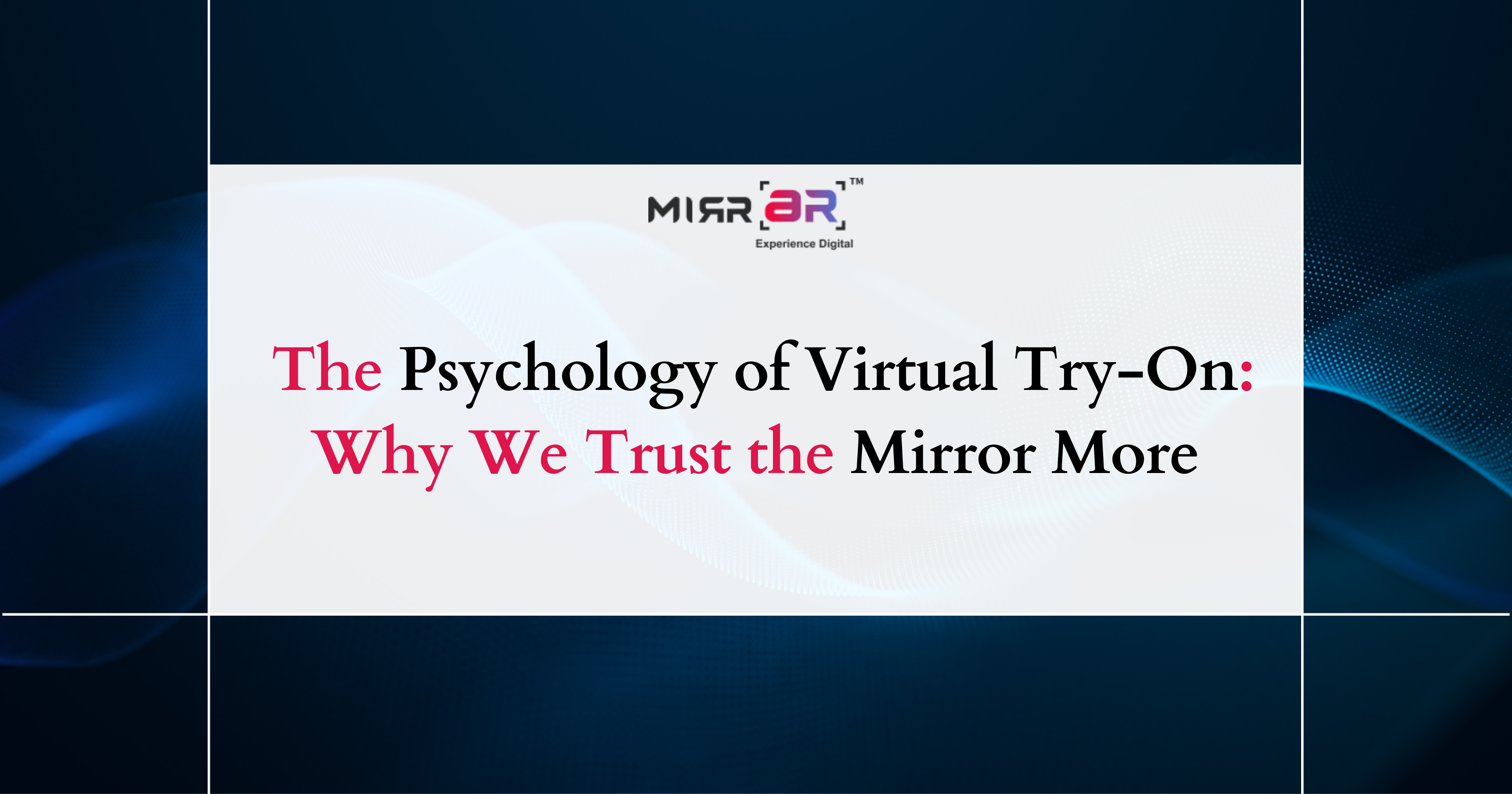In the fast-paced world of digital commerce, Virtual Try-On (VTO) has become one of the most powerful innovations transforming how consumers shop. Whether it’s clothing, eyewear, jewelry, or makeup, VTO allows people to see themselves in products digitally before making a purchase. But what makes this technology so effective isn’t just its convenience—it’s the psychology behind it. Humans have always relied on mirrors and reflections for validation, self-expression, and decision-making. VTO taps directly into this instinct, making it easier for customers to trust what they see and ultimately, to buy.
The Mirror Effect: Why Seeing Is Believing
From childhood, mirrors play an essential role in how we perceive ourselves. They help us assess our appearance, experiment with identity, and build confidence. When shopping in physical stores, mirrors become the final decision-maker—do we feel good in the outfit, the glasses, or the lipstick shade?
VTO replicates this mirror effect in the digital world. By allowing customers to see themselves in products virtually, it bridges the gap between imagination and reality. Instead of wondering whether something might look good, shoppers see a version of themselves wearing it. That visualization is powerful because it taps into the psychology of self-image—people are far more likely to trust their reflection than abstract product images or descriptions.
Reducing Cognitive Dissonance
One of the biggest hurdles in online shopping is cognitive dissonance—the mental discomfort of uncertainty. Will the dress flatter my body shape? Will the sunglasses suit my face? What if the makeup shade doesn’t match my skin tone?
Traditional e-commerce forces shoppers to imagine answers to these questions. VTO eliminates much of that uncertainty by offering real-time feedback. Seeing themselves in the product reduces doubt, creating confidence in purchase decisions. This sense of control lowers the chances of buyer’s remorse and significantly decreases return rates, a win for both customers and retailers.
The Power of Personalization
Psychologically, humans respond strongly to personalized experiences. When people see products tailored to them, they feel recognized and valued. VTO capitalizes on this need for personalization by showcasing how an item looks on the individual, not just on a model or mannequin.
This makes shopping feel more intimate and emotionally engaging. For example, a shopper trying on earrings virtually isn’t just viewing a product; they’re experiencing how it integrates with their unique style. That level of personalization drives higher emotional attachment to the item, increasing the likelihood of purchase.
Trust Through Familiarity
Another reason why consumers trust VTO is that it builds familiarity. Psychologists call this the mere-exposure effect—the more we are exposed to something, the more likely we are to develop a preference for it.
When customers repeatedly see themselves in a product through VTO, they become accustomed to the image. Over time, that familiarity translates into comfort and trust. In other words, the more someone sees themselves wearing a pair of shoes or a jacket virtually, the more natural it feels to own it in real life.
Social Validation in the Digital Age
Shopping has always been a social activity. Traditionally, people seek validation from friends or family before making a purchase. VTO enhances this by making it easy to share virtual looks on social platforms or during group shopping sessions in the metaverse.
Psychologically, this social validation plays a crucial role. When others compliment or endorse a virtual try-on, it reinforces the customer’s decision and builds confidence in the purchase. This blend of self-reflection and social feedback creates a powerful trust loop that benefits both consumers and brands.
Overcoming the Online Shopping Trust Gap
Despite the convenience of e-commerce, many consumers still hesitate to buy products they can’t physically touch or try. This “trust gap” is particularly strong in categories like apparel, eyewear, and beauty, where fit and appearance matter most.
VTO addresses this challenge by bridging the sensory divide. While customers can’t physically feel the fabric or texture, they can visualize the end result on themselves. This psychological reassurance makes them feel more secure about their decisions, helping brands overcome one of the biggest barriers to online shopping.
Building Emotional Connections
At its core, shopping is emotional. People buy not just to fulfill a need but to express identity, boost confidence, or celebrate milestones. VTO resonates deeply with these emotions because it connects products directly to self-perception. Seeing oneself look good in a virtual outfit or accessory sparks joy, excitement, and anticipation—emotions that strongly influence buying behavior.
Brands that leverage VTO effectively don’t just sell products; they sell experiences and feelings of empowerment. This emotional connection fosters loyalty and transforms shopping from a transaction into a journey of self-discovery.
The Future of VTO and Consumer Psychology
As VTO technology advances, the psychological trust it creates will only deepen. Future iterations may integrate haptic feedback, hyper-realistic textures, and AI-driven styling suggestions to further blur the line between physical and digital try-ons. Combined with the metaverse, shoppers may soon enjoy collective VTO experiences, where groups can explore, experiment, and validate each other’s looks in real time.
What will remain constant, however, is the underlying psychology: people trust their reflection. Whether in a mirror or through augmented reality, seeing oneself in a product provides the ultimate reassurance.
Conclusion
The success of Virtual Try-On is rooted not just in technology but in human psychology. By replicating the mirror effect, reducing uncertainty, and personalizing experiences, VTO creates a level of trust that static online shopping cannot match. It taps into our innate need to see, to imagine, and to validate ourselves in the products we choose.
In the end, the reason we trust VTO is simple—it makes us feel like we’re looking into a mirror, and when it comes to making decisions about how we present ourselves to the world, the mirror has always had the final say.
